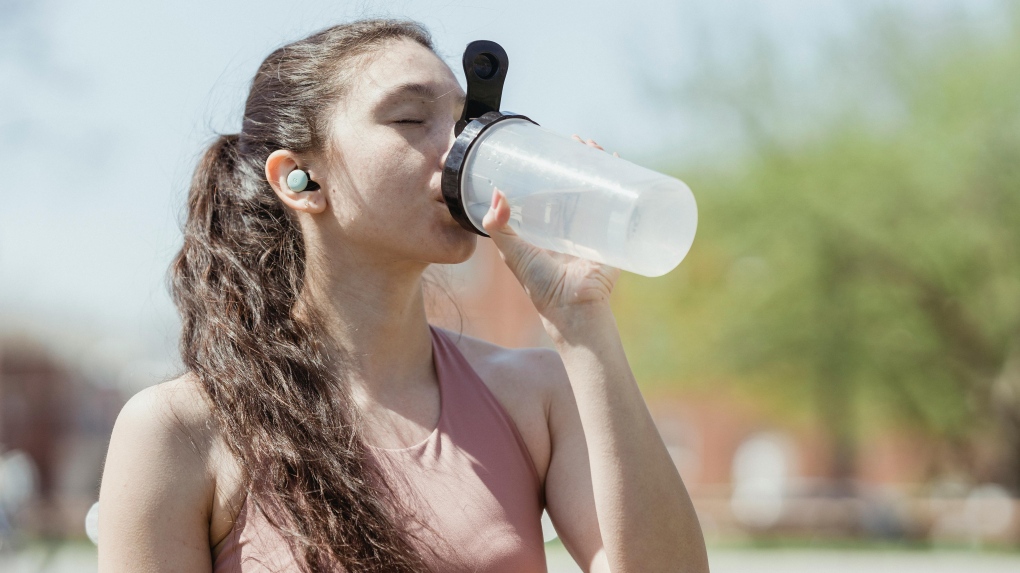Whether it be the latest prized Stanley cup or that 10-year-old plastic spout bottle you don’t go anywhere without, “emotional support water bottles” seem to be stuck to our sides and not going anywhere.
The term for the self-care accessory has been circling social media for several years, with the hashtag #emotionalsupportwaterbottle at over 18,000 posts on TikTok and thousands on Instagram. The catchphrase seems to embody how most people feel about their trusty sidekick that doesn’t leave their sight.
Always having a sip of water by your side can be great for remembering to stay hydrated, but sometimes forming an attachment to a water bottle can lead to a fixation on hydration that could have serious health consequences if taken too far, according to medical experts.
“It’s not easy to overwhelm your kidneys,” said Dr. Kambiz Kalantari, a nephrologist at the Mayo Clinic in Rochester, Minnesota. “But there are situations in which people are obsessed with drinking water. … We’re talking about 10, 15 litres that overwhelm their kidneys.”
Here are tips on gauging how much water you need to put in your drinking cup and what could happen when a hydration habit goes overboard.
Overhydration is hard to achieve but possible
The amount of water a person should drink in a day is an age-old question that doesn’t have a one-size-fits-all answer — it depends on factors such as a person’s health, size, location and types of activities in a day.
The National Academy of Medicine recommends 3.7 litres (125 ounces) of water per day for men and 2.7 litres (91 ounces) for women, which account for water intake from all food and beverages throughout the day, while many stick to the common advice of drinking 8 cups of water a day (1.9 litres or 64 ounces), which is easy to remember and typically keeps a person at a good level of hydration, according to the Mayo Clinic. Some people may need to drink less, while others may need more, the clinic adds.
There isn’t a need to force yourself to drink more water than what you’re thirsting, or carry around a water bottle, unless you are planning to exercise or spend time outdoors exposed to heat, which can cause fluid loss from sweat, Kalantari said.
If a person were to drink too much water, in most cases, the kidneys would excrete the excess fluid, resulting in the person urinating a lot, Kalantari said. If the kidneys cannot excrete the excess water, due either to a chronic condition such as kidney disease or being extremely overwhelmed, that is when problems arise and can require a trip to the hospital in critical cases.
There are also limits to the amount of fluid that kidneys are able to excrete if a person has not eaten enough food that day, Kalantari said.
For most people, drinking enough water to fill two 40-ounce (1.2 litres) water bottles in 10 hours will create a safe range of avoiding dehydration and overhydration, said Dr. Ryan Bober, an internal medicine specialist with Cedars-Sinai in Los Angeles.
“If you start to get to the point where you don’t really have much of a thirst mechanism — you feel like you’re forcing the rest of whatever number of ounces you have left in the bottle down, have started having trouble with how easily you’re swallowing the water — then you’ve kind of pushed yourself into the range of overhydration,” Bober said.
Water intoxication
Water intoxication, also called water poisoning, occurs when there is so much fluid that the excess cannot be removed by sweating or urinating and causes hyponatremia, a condition in which the blood’s sodium level is below normal range.
Besides excess urination, the symptoms of water intoxication can include feeling irritable, lethargic, more easily distractible or confused, vomiting, nausea, and in most critical cases, seizures and comas or even death, Bober said.
Typically, mild cases of overhydration — which occur from drinking too much water in a short amount of time or drinking too much water over a span of a few days, such as 2 to 3 litres in an hour or 10 litres in a day — will resolve once the person stops drinking as much water, as the kidneys will excrete the excess within a few days, Bober said.
Actor Brooke Shields experienced the condition in September when she had a seizure from drinking too much water. Shields went to a hospital, where she was diagnosed with low blood sodium and prescribed a treatment plan by a doctor.
Researchers also theorized that martial artist and actor Bruce Lee died from hyponatremia, according to a March 2022 study. The report cited the actor’s “high chronic fluid intake,” marijuana use that can increase thirst, and prescription drug and alcohol intake that can affect the kidneys.
Benefits of staying hydrated
Staying hydrated is important for keeping bodily functions running smoothly, such as the urinary and digestive tracts and the circulatory system, which pumps blood to the heart. Hydration can also help you feel more energized, improve mood, and bolster attention span and short-term memory.
Oftentimes, drinking more water is a goal set for weight loss. In moderation, drinking water before a meal can help to fill up the stomach and cause people to feel fuller, and in turn they will eat less, Bober said.
Drinking water when thirsty can activate dopamine-related pathways, giving people a pleasurable response, Bober said. But without moderation, an overreliance on the feel-good chemical hit could be the factor that leads to an increase in water intake and overhydration. And in situations that can have a serious impact on mental health, such as social isolation or chronic stress and anxiety, the pathways can shift in such a way that the pleasure response can still be activated even at levels close to overhydration, he added.
The emotional support water bottle has its perks, but even drinking water needs to be in moderation — and the reusable bottle should be cleaned regularly, Bober said.






















